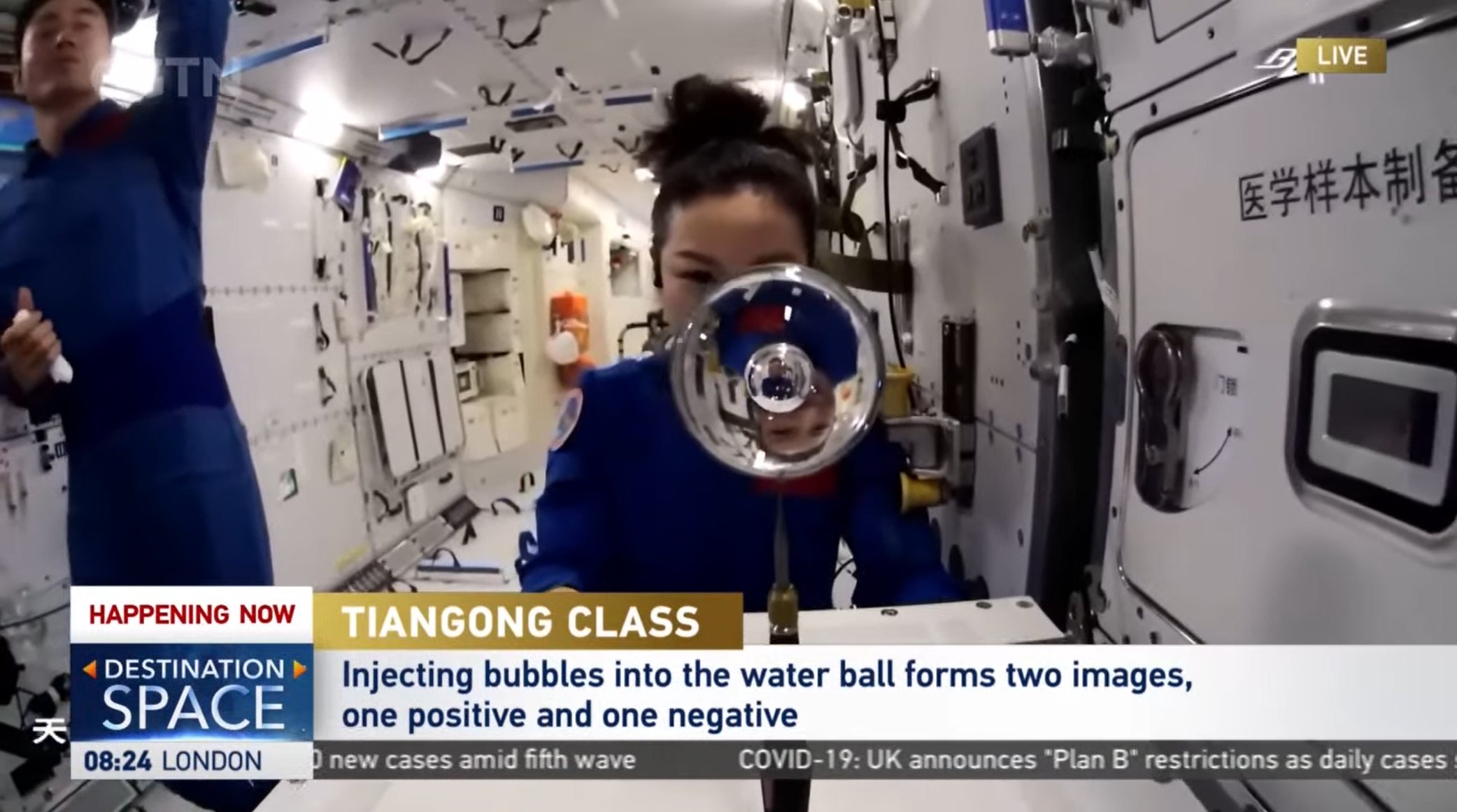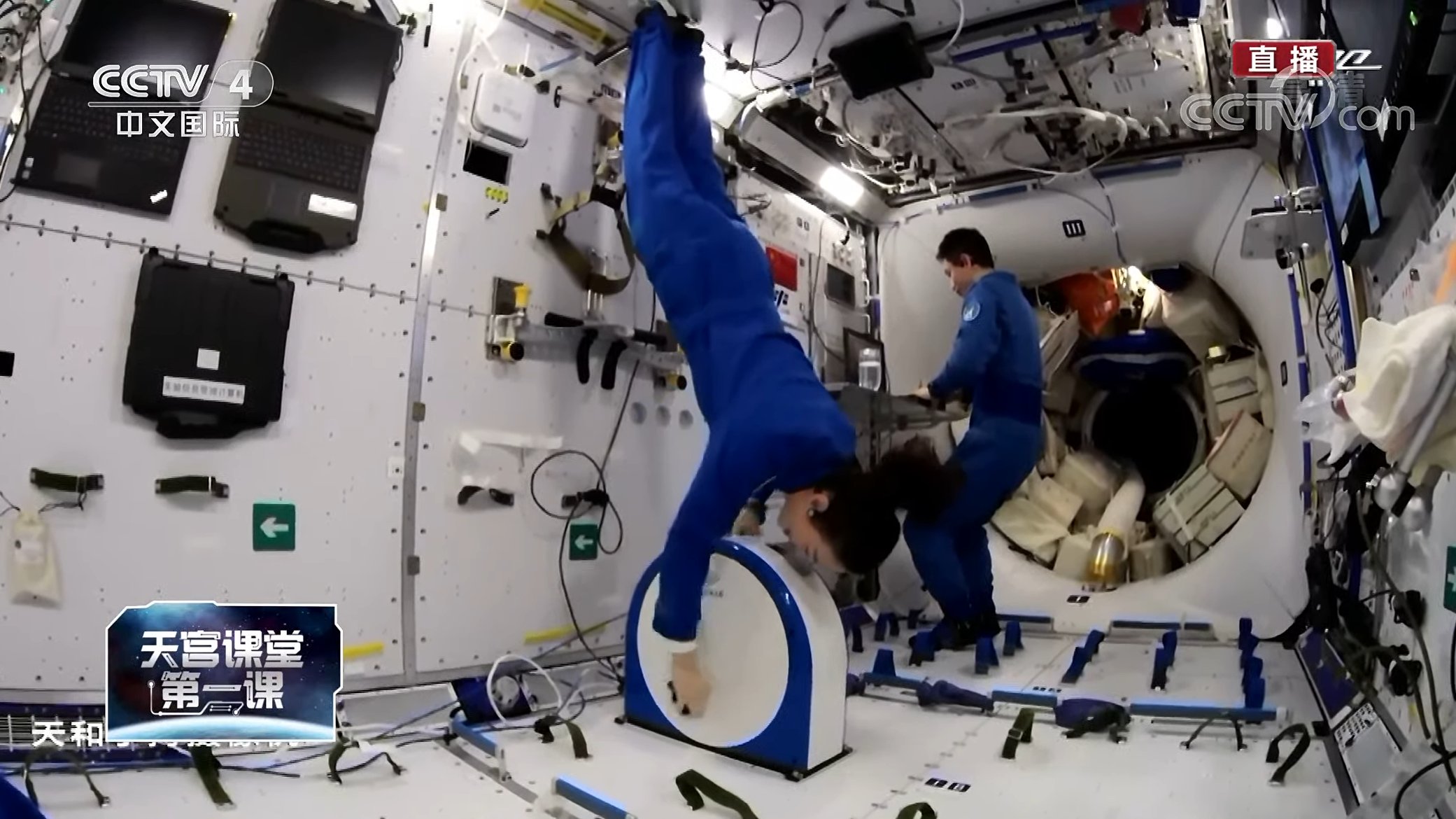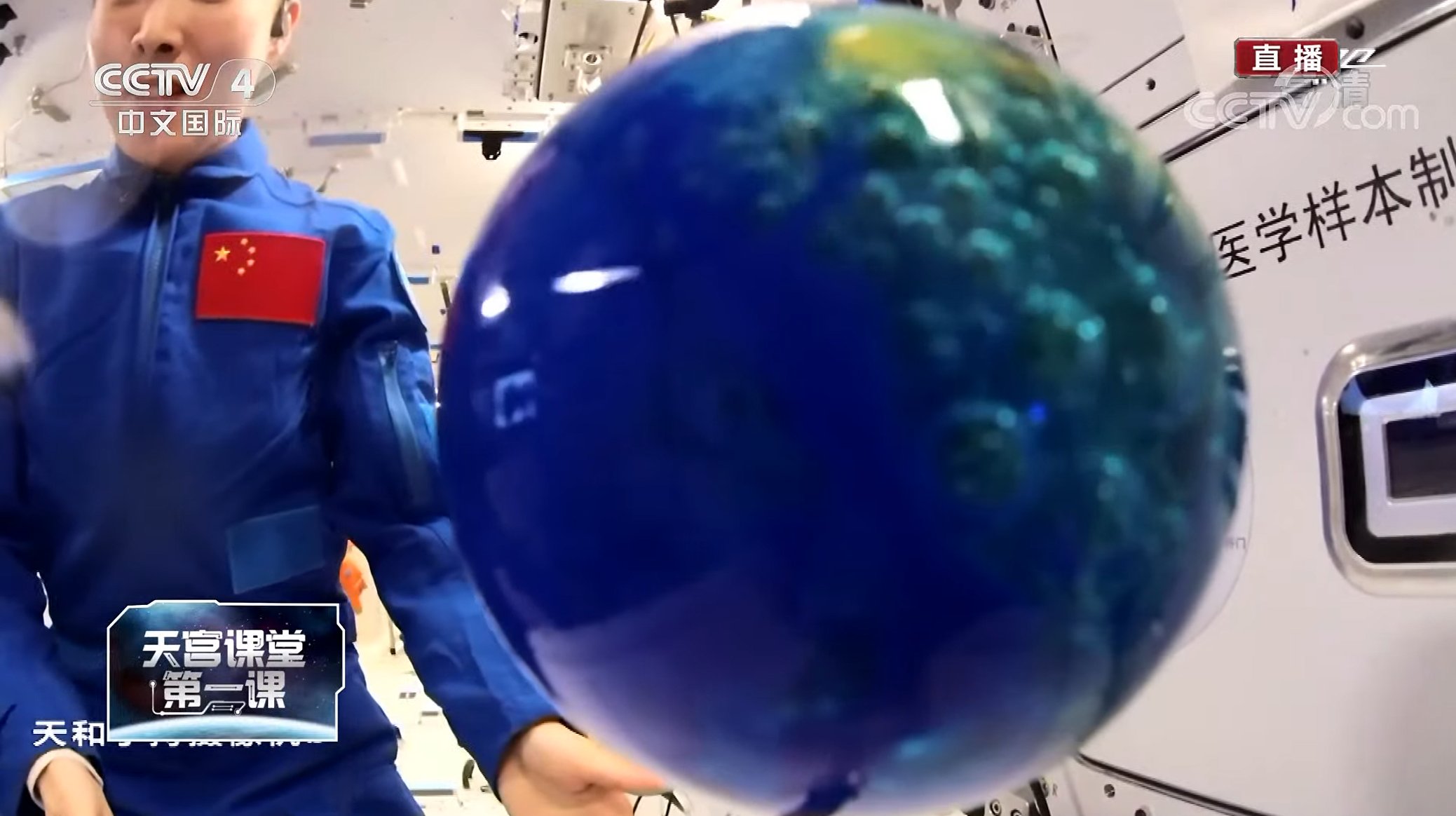China's Shenzhou 13 astronauts stream live science lecture from space station
China broadcast a live classroom from its new space station on Dec. 9, in an effort to both inspire students and present a friendly image of the country's space ambitions.
The three Shenzhou 13 astronauts aboard the orbiting Tianhe module connected with 1,420 students on Earth in five classrooms across China in Beijing, Guangxi Zhuang Autonomous Region, Sichuan Province, Hong Kong and Macao with the support of relay satellites.
Tens of millions more followed the 60-minute-long class through live broadcasts.
Related: The latest news about China's space program

Astronaut Wang Yaping, who last month became China's first woman to embark on a spacewalk, gave a tour of Tianhe, starting with sleeping quarters and moving on to exercise equipment and dining areas.
Mission commander Zhai Zhigang then introduced designs of a suit worn by crewmate Ye Guangfu, which he explained can prevent muscular atrophy in a microgravity environment.
Wang Yaping, who on her first trip to space in 2013 aboard Tiangong 1 delivered a science class to 60 million schoolchildren, then performed experiments to show the unique environment of space.
Get the Space.com Newsletter
Breaking space news, the latest updates on rocket launches, skywatching events and more!

Demonstrations included showing beating myocardial (heart) cells and how they are studied in orbit, a loss of buoyancy using a tennis ball and water, movement experiments, and creating a bubble inside a ball of water to show the inversion of images.
A select few students also had the opportunity to ask questions in real-time in the final minutes, including a query on dreaming in space.
The lesson was intended to be inspirational to its young audience. "I am inspired by their self-discipline and persistence. I will continue to study and work hard in the field I am interested in and make contributions to the country in the future," said a student from Pui Kiu College in Hong Kong.
"I hope that it can plant the seeds of space and science in the hearts of children, which will one day grow into towering trees in the future," teacher Sun Weiqiang told CCTV.

China's live lesson is significant for both domestic and international purposes, said Molly Silk, a doctoral researcher of Chinese space policy at the University of Manchester. "A real-time, interactive event with China's taikonauts highlights the reality of the country's technological achievements and displays the competencies and utility of its space program. Such an event serves to enhance national pride and to encourage young citizens to pursue science-based careers."
"While such a demonstration further validates China's position as a space power among the international community, it also presents China as a power that seeks to share its space programme for the benefit of humankind," said Silk.
"An event led by the taikonauts also shows the world the "human" side of China's space endeavors, which offers a friendly contrast to frequent foreign news reports of China's technological ambitions as a global threat."
The live lecture was the first of what is intended to be a series of "Tiangong classes." Tianhe launched in late April and is the first module for China's space station, following smaller test labs launched in 2011 and 2016.
Two new space station modules are scheduled to join Tianhe in 2022 to complete the T-shaped Chinese space station. It is expected to operate in low Earth orbit for at least ten years.
Shenzhou 13 launched on Oct. 15 Eastern time, and Zhai, Wang and Ye are expected to stay aboard Tianhe until March 2022.
Follow us on Twitter @Spacedotcom and on Facebook.
Join our Space Forums to keep talking space on the latest missions, night sky and more! And if you have a news tip, correction or comment, let us know at: community@space.com.

Andrew is a freelance space journalist with a focus on reporting on China's rapidly growing space sector. He began writing for Space.com in 2019 and writes for SpaceNews, IEEE Spectrum, National Geographic, Sky & Telescope, New Scientist and others. Andrew first caught the space bug when, as a youngster, he saw Voyager images of other worlds in our solar system for the first time. Away from space, Andrew enjoys trail running in the forests of Finland. You can follow him on Twitter @AJ_FI.









